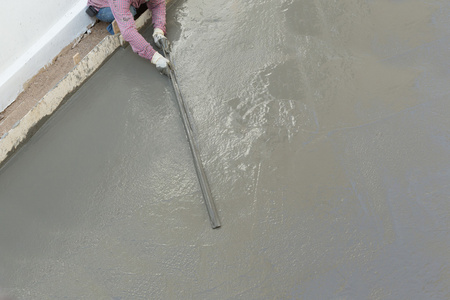In construction engineering, cement mortar is one of the basic materials, and its construction efficiency directly affects the progress and quality of the entire project. However, cement mortar often generates a large number of bubbles during mixing and construction, which not only affect the mechanical properties and durability of the
material, but may also lead to low construction efficiency. Therefore, introducing cement mortar defoamers has become an important means to improve construction efficiency. This article will explore how cement mortar defoamers can improve construction efficiency from the following aspects.

Reduce bubbles to improve fluidity. Bubbles in cement mortar can hinder the fluidity of the material, making the mixing and laying process difficult. The main function of defoamers is to eliminate these bubbles, significantly improving the fluidity of cement mortar. Cement mortar with good fluidity is easier to mix, pump, and lay, thereby
reducing construction obstacles caused by bubbles and improving construction speed.
Optimize the mixing process. During the mixing process, the generation of bubbles is often due to chemical reactions and physical interactions between components such as cement, water, and additives. The addition of defoamers can effectively suppress the generation of bubbles during these processes, making the stirring process
smoother. In addition, defoamers can help the components mix better and evenly, improve the overall quality of cement mortar, and lay a good foundation for subsequent construction.
Reduce construction difficulty, as the presence of bubbles can increase construction difficulty, such as causing uneven walls, hollow floors, and other issues. These issues not only affect aesthetics, but may also lead to an increase in maintenance costs in the later stages. After using cement mortar defoamer, the difficulty of construction is
greatly reduced due to the reduction of bubbles, and construction personnel can easily complete tasks such as laying and plastering, improving construction efficiency.
Improve the laying speed. During the laying process, cement mortar with good fluidity and no bubbles is more likely to be evenly spread to the predetermined position, and is less likely to produce depressions or protrusions. In this way, the laying speed can be significantly improved, especially in large-scale construction, the effect is more
obvious. Meanwhile, the increase in laying speed also means that the project can be completed faster, which helps to shorten the construction period.
Reduce rework and repair. Quality problems caused by bubbles, such as hollowing and cracks, often require rework and repair, which not only increases construction costs but also prolongs the construction period. After using cement mortar defoamer, these quality problems were effectively controlled due to the reduction of bubbles, and
the number of rework and repairs was significantly reduced. This not only saves time and costs, but also improves the quality of the project.
Save time and costs. Taking into account the above points, cement mortar defoamers effectively improve construction efficiency by reducing bubbles, improving fluidity, optimizing the mixing process, reducing construction difficulty, increasing laying speed, and reducing rework and repair. The improvement of construction efficiency means
that the project can be completed faster, thereby saving a lot of time and costs. For construction companies, this means higher economic benefits and stronger market competitiveness.
In short, cement mortar defoamers play an important role in improving construction efficiency. By reducing bubbles and optimizing the construction process, defoamers not only improve the performance and quality of cement mortar, but also significantly enhance construction efficiency, contributing an important force to the development
of the construction industry.

 English
English
 Chinese
Chinese Vietnamese
Vietnamese
 HOME
HOME
 PRODUCT
PRODUCT
 NEWS
NEWS
 CONTACT
CONTACT


